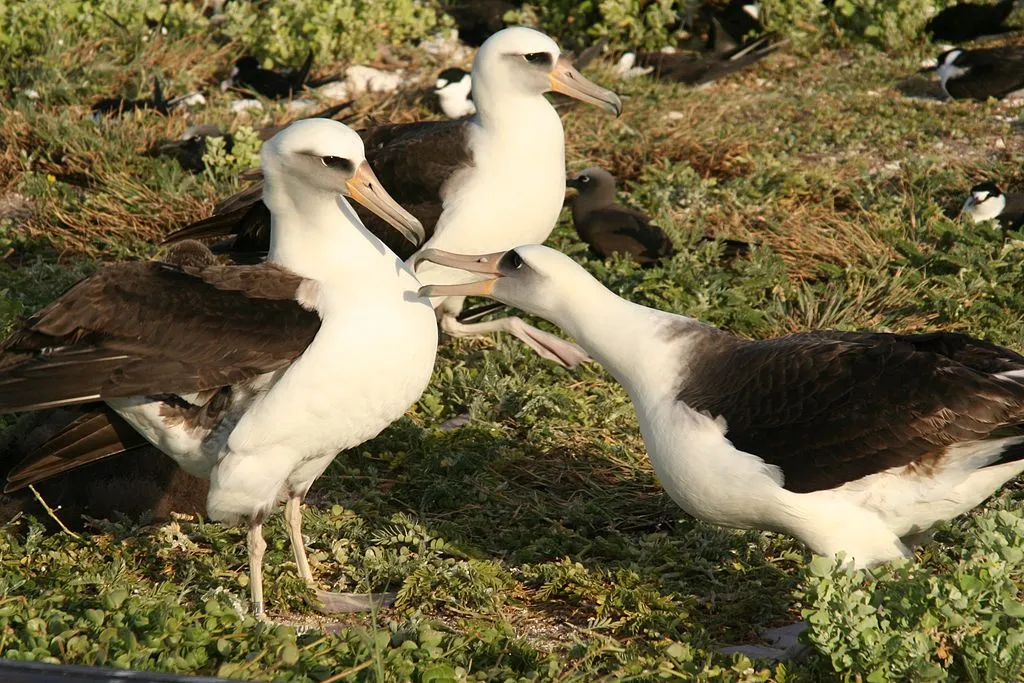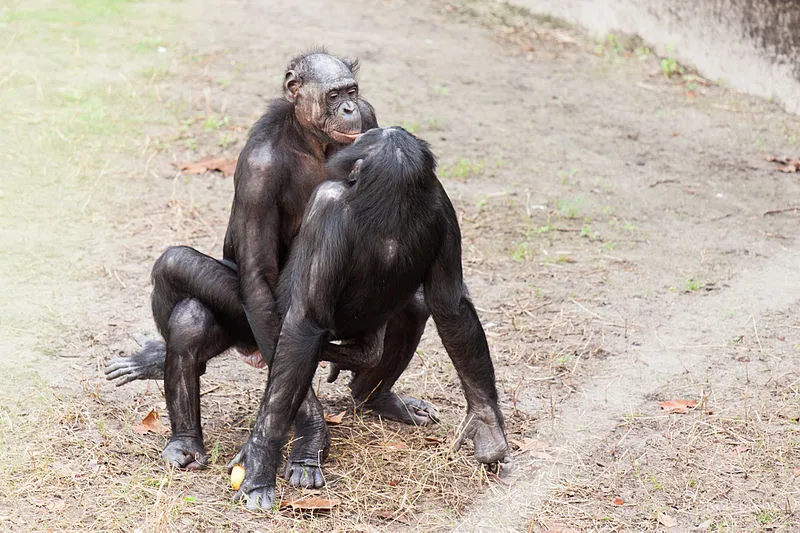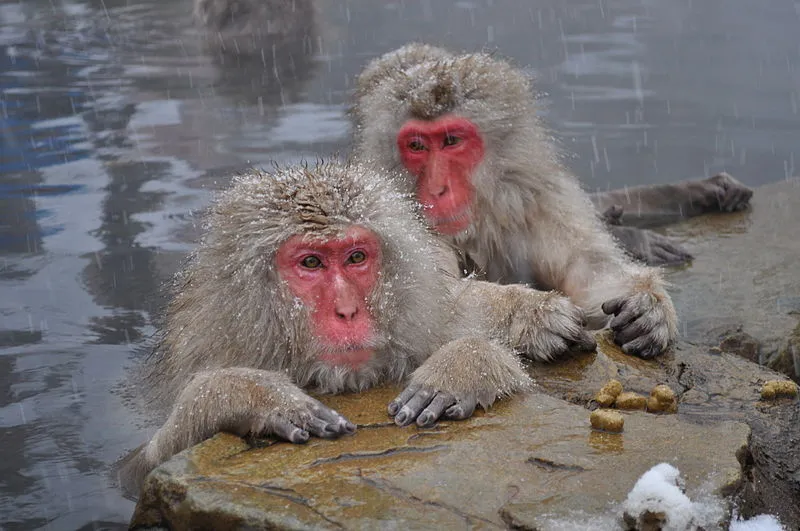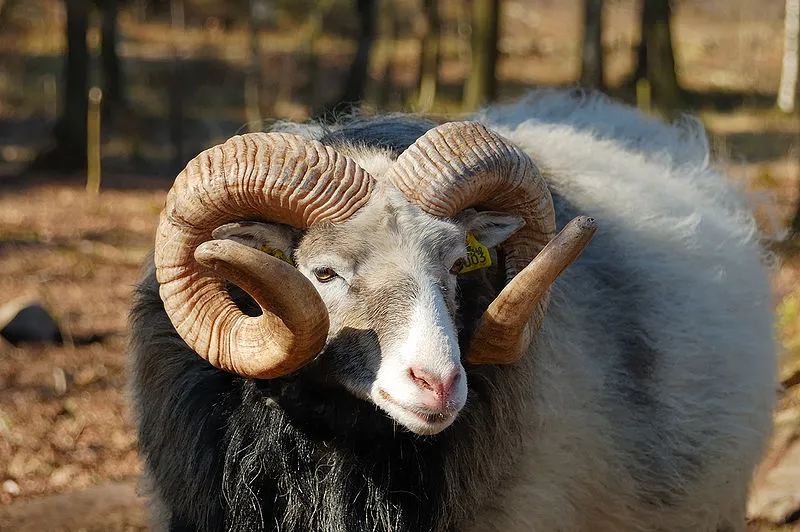On the surface, homosexual behavior seems to fly in the face of evolutionary theory. What possible adaptive significance could it have? How does it increase the fitness of an individual to perform behaviors such as displays, mounting and copulation with a member of the same sex? Yet the fact of the matter is, many species (around 1500 documented) engage in some degree of sexual behavior involving same sex partners. Which in turn suggests there must be some clear adaptive benefit to doing so.
Birds of a feather...
Let's start with the birds. Birds have been noted to peform homosexual acts or form homosexual pairs across a wide variety of contexts. One of the most cited examples is the female-female pairings of Laysan Albatrosses, particularly at one colony in Oahu, Hawaii.

Around ⅓ of the pairings in this particular colony are female-female bonds
What's interesting about these birds is that they form largely monogamous pairs, with some extra-pair copulations occuring - a fact which becomes important for our female-bonded pairs when attempting to secure the best genetic material for their offspring. To do so, one female (and the next season, the other) will mate with the ‘fittest’ male available, regardless of his existing heterosexual couple. Working together, the females then rear their chick, thus ensuring their own Darwinian fitness through reproductive success. The reason behind this strategy lies in a high population skew, with more females than males in the population. In this sense, the pairing of females is entirely facultative. Two females together simply have a higher chance of rearing offspring than a single female would alone (though interestingly the chance is still lower than in heterosexually bonded pairs).
Interestingly, it has been shown that in general, female-female heterosexual pairings tend to occur more frequently in bird species which form monogamous pair bonds AND are even more likely in birds with precocial (well-developed at birth) offspring. Though these two facts may seem to contradict one another, a possible reason lies in that female-female pairings are less successful in rearing, thus work better when the chicks are already nearly ‘good to go’ at birth.
Where male-male homosexual behavior occurs, it tends to be more of the short-lived display and/or mounting behavior variety (go figure). So males of species which are polygamous, with multiple females to a male, tend to show more homosexual behaviors! Again, this seems counter-intuitive, but these behaviors most likely regulate social hierarchies in males and thus establish which males have more access to females.
Ok, but what about primates?
When we get into the realm of our closest relatives, things get more complex. Primates, it seems, just like having sex. They're not always too fussy about who they're having it with either so, rather than the predominantly homosexual bonds seen in monogamous birds, we find plenty of evidence for a mix of homosexual and heterosexual behavior. The classic example here is Bonobos:

There isn't much that can't be solved with sex if you're a Bonobo
For these apes, sex is the glue that holds society together. It can be used to establish rank, reconcile feuds and bond members of the group. Two male Bonobos will often settle a score with some well-timed ‘penis-fencing.’ The advantage here lies in the fact that when the group is well-bonded, they function better as a cohesive unit, thus increasing everyone’s fitness. Sexual behavior between females, males and even young Bonobos is very common, with the little ones often actively climbing the social ladder by performing ‘favors’ for their elders.
Another primate group whose sexual exploits are well-studied are Macaques:

Who knows what's going on in that hot-tub?
Amongst these monkeys, it's very common for females to copulate with one another and interestingly, it often occurs with males freely available. Though this fact initially puzzled researchers, close observation revealed that sexual acts between female Macaque pairs were often more varied in terms of the positions and movements used than heterosexual Macaque pairings. The conclusion? That though these ladies mate with males they often turn to their fellow females for gratification purely because it's more… um, fun. Phew! Again, sex in the Macaque world is still largely bisexual however, and likely also serves to reinforce social bonds and hierarchies in their female dominated society.
Bar Ram Ewe?

From an early age Barry knew he just wasn't like the other Rams
Perhaps one of the most fascinating examples of ‘strict’ homosexuality that occurs is that of the male domestic sheep. For some Rams, there simply is no use for ewes. Studies show that 10 % of male sheep, in fact, exhibit a lifelong preference for homosexual interactions. Various developmental and socialization factors have been shown to influence this and intriguingly, examination of the brains of these males shows that they posses a smaller hypothalamus (a region of the brain involved in regulating sexual behavior) than their heterosexual counterparts. Clusters of neurons responsible for sex hormone regulation also differ between ‘gay’ and heterosexual sheep. One theory of how this comes to be lies with different levels of exposure to androgen hormones in these males during development. Fascinatingly, similar brain structure differences have been noted between gay and straight men!
Of course, the obvious question here is how such genes persist in the sheep population, given that these males don't reproduce. A possible mechanism lies in the expression of the gene in females related to these homosexually oriented males. Though not yet proven, it's possible the same gene in related ewes governs functions such as increased fertility or sexual activity thus ensuring these females produce more offspring and thus more Rams with the same ‘gay’ gene.
So what about Homo sapiens?
While all of this provides compelling evolutionary mechanisms for the development and propagation of homosexuality in nature, the full range of factors influencing homosexuality in humans are still being uncovered. Many of the behaviors and situations discussed here are more facultative in nature and of course there is a strong argument for innate homosexuality in humans. In a later article, I'll be looking at these factors as they apply to humans specifically, as our understanding of the genetics of gayness within our own species deepens.
Well, that's it for this one. Stay tuned for my delve into the complex factors affecting human sexuality!
Happy Steeming people,
The Wise Fox
Images from wikimedia commons
Paper and article sources:
https://academic.oup.com/beheco/article/18/1/21/209396
https://www.news-medical.net/news/2006/10/23/1500-animal-species-practice-homosexuality.aspx
https://www.ncbi.nlm.nih.gov/pmc/articles/PMC3866402/
https://www.ncbi.nlm.nih.gov/pmc/articles/PMC3085551/
http://www.bbc.com/earth/story/20150206-are-there-any-homosexual-animals
http://community.lovenature.com/wild/why-do-some-animals-exhibit-homosexual-behaviour
And for an in depth look at mating systems and sexual behavior in birds, check out this paper:
https://academic.oup.com/beheco/article/18/1/21/209396
